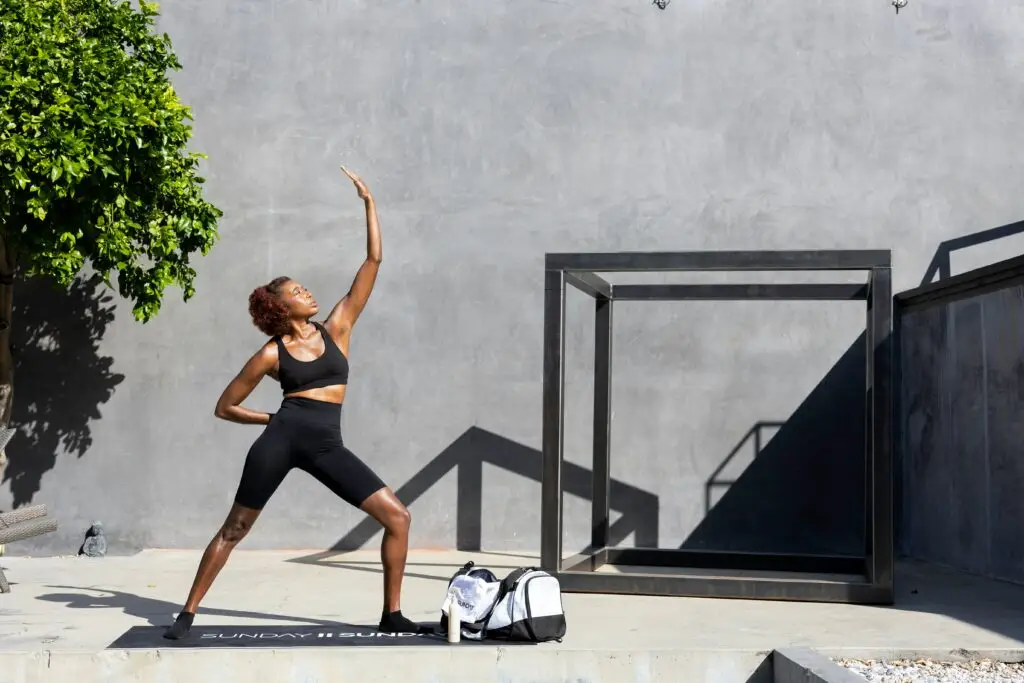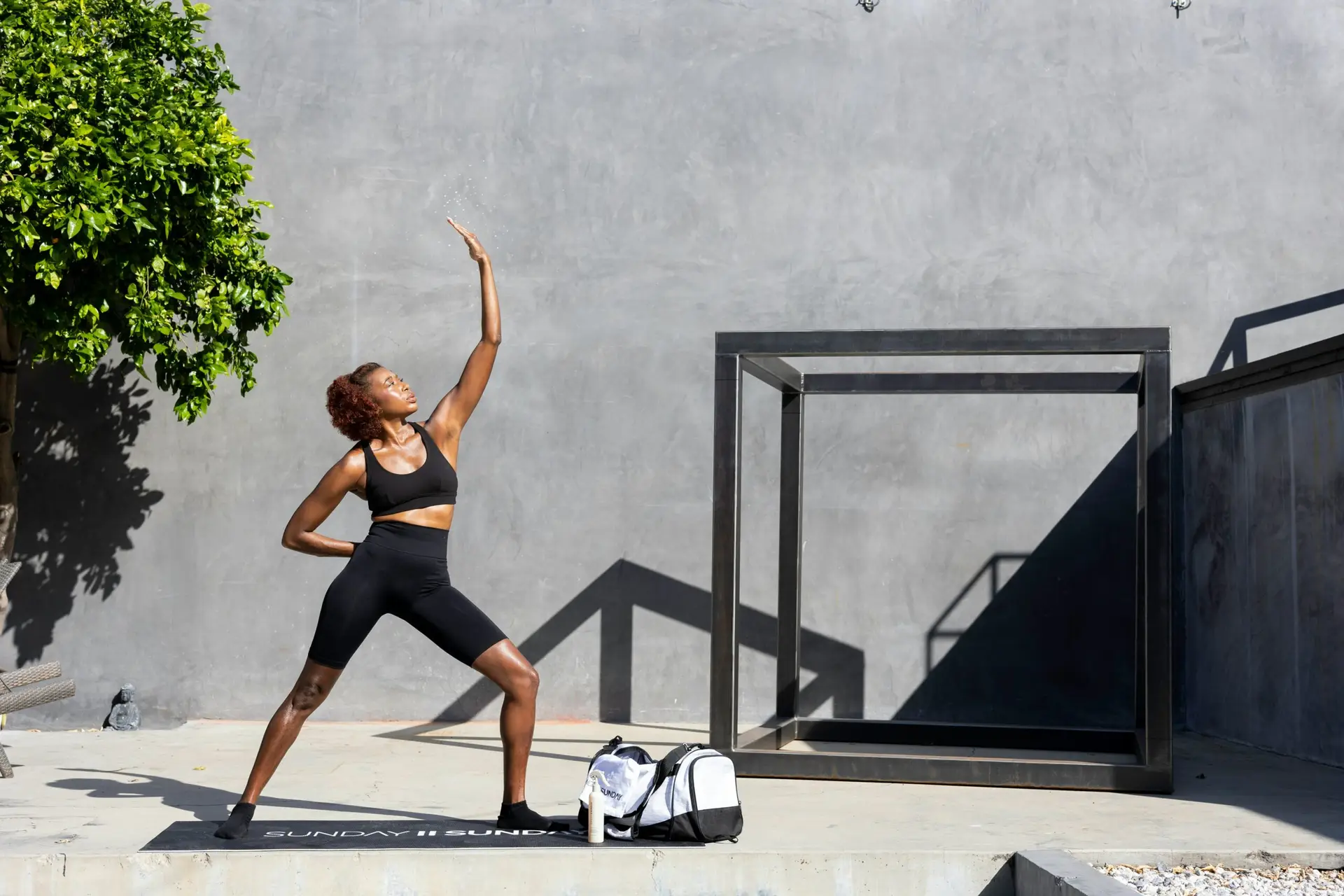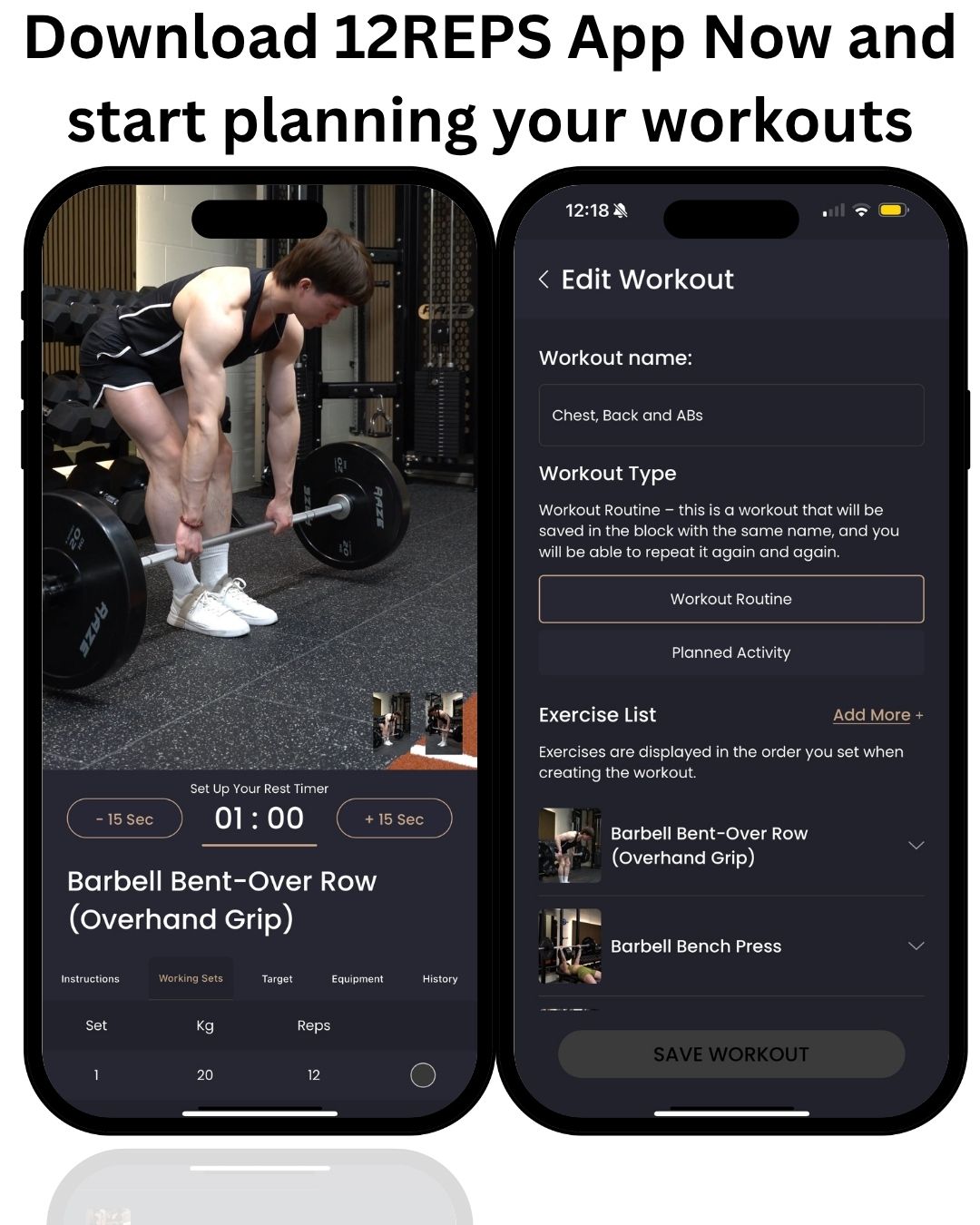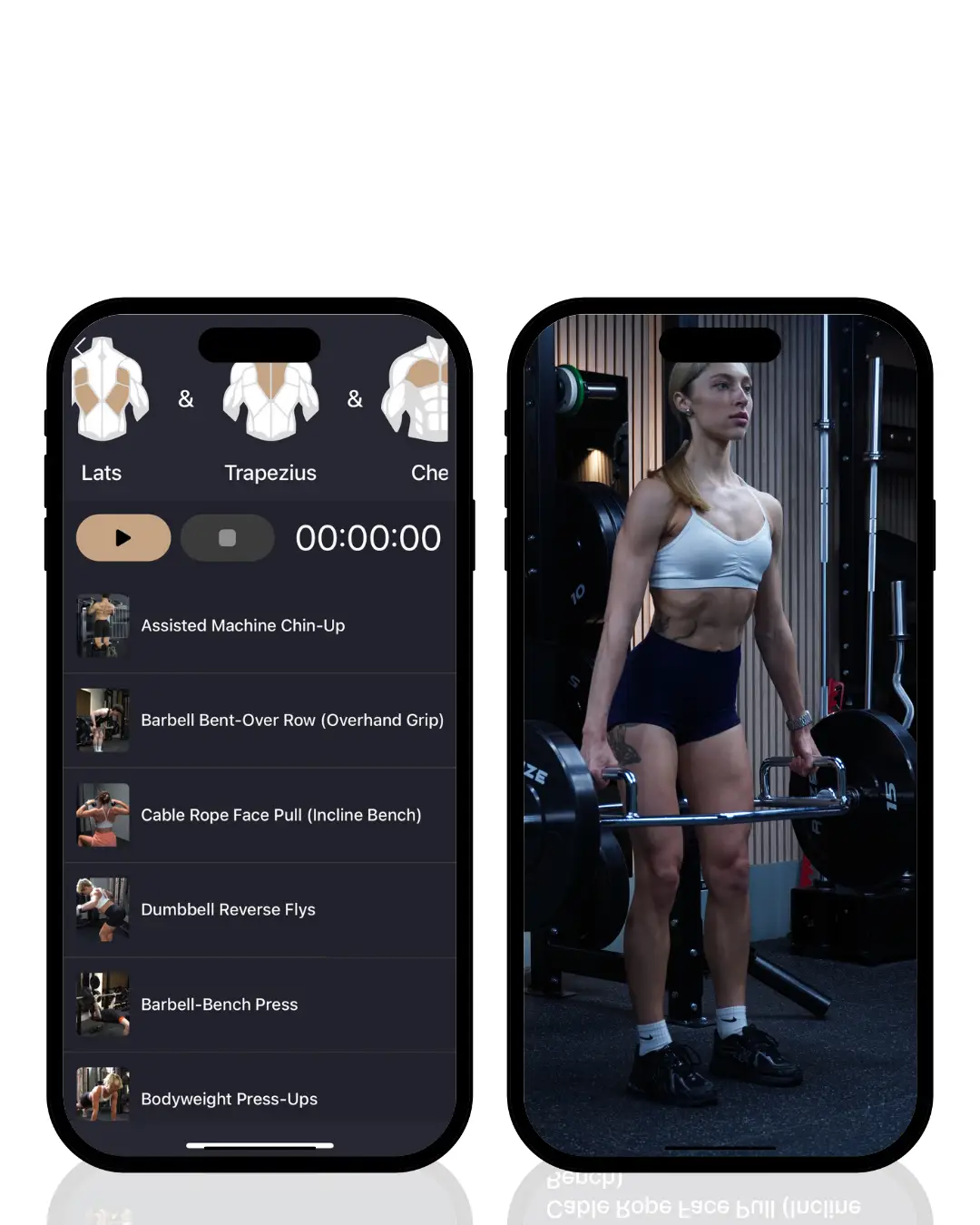By Will Duru, BSc (Hons) Sport and Exercise Science, Award-winning Personal Trainer with over 10 years of experience in strength training and optimising recovery
As a personal trainer with over a decade of experience and a background in Sport and Exercise Science, I’ve seen countless women transform their lives through strength training. For women in their 40s, the journey often comes with unique questions and concerns, especially when it comes to hormones. There’s a common misconception that strength training will make women ‘bulky’ or that it’s only for younger individuals. Let me tell you, that couldn’t be further from the truth.
In this article, I want to share my insights and experience to show you why strength training isn’t just beneficial, it’s absolutely crucial for women over 40. We’ll dive into the hormonal shifts you might be experiencing, how they impact your body, and most importantly, how a smart, tailored strength training program can empower you to feel stronger, healthier, and more confident than ever before. This isn’t just about lifting weights; it’s about investing in your long-term health and well-being.

Understanding Female Ageing: Hormonal Changes in the 40s
When women hit their 40s, a significant shift begins to occur within their bodies, largely driven by hormonal changes. This period, often referred to as perimenopause, is a natural transition leading up to menopause. From my perspective as a trainer, understanding these changes is the first step towards effectively managing them and continuing to thrive.
Perimenopause and Estrogen Fluctuations
One of the primary hormones at play during perimenopause is estrogen. Unlike the more predictable cycles of your younger years, estrogen levels during this phase can fluctuate wildly. They might surge, then dip, leading to a variety of symptoms that can be confusing and frustrating. I’ve had countless clients come to me feeling bewildered by sudden hot flashes, night sweats, or unpredictable periods. This is often the erratic dance of estrogen.
These fluctuations are a direct result of your ovaries gradually producing less estrogen. This isn’t a steady decline; it’s often quite erratic, which is why symptoms can vary so much from day to day or month to month. As a trainer, I explain to my clients that these hormonal shifts are normal, but their impact on how you feel and how your body responds to exercise is very real.
Impact on Muscle Mass and Bone Density
Beyond the more noticeable symptoms, these hormonal changes have a profound impact on two critical aspects of your physical health: muscle mass and bone density. Estrogen plays a vital role in maintaining both. As its levels decline, women become more susceptible to losing muscle mass (sarcopenia) and experiencing a decrease in bone density, which can lead to osteoporosis.
I’ve seen this firsthand with clients. A woman who was consistently strong in her 30s might find that maintaining muscle feels harder in her 40s, even if her training hasn’t changed. This is why I emphasise strength training so much. It’s not just about looking good; it’s about actively combating these age-related and hormonally driven changes.
Metabolic Changes and Weight Distribution
Another common concern I hear from women in their 40s is about changes in their metabolism and where their body stores fat. You might be eating the same, exercising the same, but the scale creeps up, and you notice more fat accumulating around your midsection rather than your hips and thighs.
As estrogen levels decrease, there’s a tendency for the body to shift fat storage from the hips and thighs to the abdominal area. Furthermore, your resting metabolic rate can naturally slow down with age, partly due to the loss of muscle mass. My approach with clients here is always to focus on building and maintaining muscle, as muscle is metabolically active and helps to keep your metabolism humming.
Mood and Energy Level Fluctuations
The hormonal shifts of perimenopause can significantly impact mood and energy levels. The erratic nature of estrogen can lead to increased irritability, anxiety, mood swings, and even feelings of depression. Many women also report persistent fatigue.
I’ve worked with clients who feel like they’re on an emotional rollercoaster, and their energy levels are unpredictable. As a trainer, I’ve seen how consistent exercise, particularly strength training, can act as a powerful antidote. It releases endorphins, natural mood boosters, and provides a sense of accomplishment and control that can be incredibly empowering during a time of such internal flux.

Why Strength Training is Crucial for Women Over 40
Now that we’ve covered the hormonal landscape of women in their 40s, let’s talk about the game-changer: strength training. As a personal trainer, I can’t stress enough how vital this is, not just for physical appearance, but for your overall well-being as you navigate this unique phase of life.
Bone Density Preservation and Osteoporosis Prevention
Remember how I mentioned the decline in bone density during perimenopause? This is where strength training becomes your superhero. Our bones are living tissues, and they respond to stress. When you lift weights, you’re putting a healthy, positive stress on your bones. This signals to your body to lay down new bone cells, making your bones denser and stronger.
I’ve seen incredible transformations in clients who were concerned about osteoporosis. I had a client, Sarah, who came to me in her early 50s with osteopenia. She was hesitant about lifting weights, fearing injury. We started slowly, focusing on proper form with bodyweight exercises, then gradually introduced light weights. Within a year, her follow-up bone density scan showed significant improvement. Strength training is one of the most effective ways to preserve and even improve your bone health.
Muscle Mass Maintenance During Hormonal Changes
As estrogen declines, so does your body’s natural ability to maintain muscle mass. This loss of muscle isn’t just about looking less toned; it directly impacts your metabolism, strength, and functional ability. Less muscle means a slower metabolism, making weight management harder.
Strength training directly counteracts this. By consistently challenging your muscles, you stimulate muscle protein synthesis, essentially telling your body to repair and rebuild muscle tissue. I’ve worked with many women who felt their strength slipping away, only to regain it and then some through a consistent strength program.
Metabolic Benefits and Weight Management
One of the most common frustrations for women in their 40s is the seemingly inevitable weight gain, especially around the midsection. Here’s the good news: strength training is your secret weapon for metabolic health and weight management.
Muscle tissue is metabolically active, meaning it burns more calories at rest than fat tissue. So, by building and maintaining muscle through strength training, you’re essentially boosting your resting metabolism. I’ve seen clients, who were stuck in a weight-loss plateau, start to see results once we incorporated consistent strength training.
Mental Health and Confidence Building
While the physical benefits of strength training are undeniable, the mental and emotional transformations are equally profound. The hormonal fluctuations of perimenopause can bring mood swings, anxiety, and a general feeling of being out of control. Strength training offers a powerful antidote.
Every time you lift a weight, every time you push through a challenging set, you’re building mental fortitude. I’ve witnessed countless clients walk into the gym feeling stressed or overwhelmed, and leave feeling energised, clear-headed, and empowered. This confidence spills over into every aspect of your life.

Female-Specific Programming Considerations
When it comes to strength training for women in their 40s, it’s not a one-size-fits-all approach. There are specific considerations that make a program truly effective and sustainable for women navigating perimenopause and beyond.
Training Around Menstrual Cycle Fluctuations
Even in perimenopause, many women still experience menstrual cycles, albeit often irregular ones. The fluctuating hormones during these cycles can impact your energy levels, strength, and recovery. During the follicular phase, when estrogen levels are generally higher, many women report feeling stronger and more energetic. This can be a great time for higher-intensity workouts.
Conversely, during the luteal phase, when progesterone is higher and estrogen starts to drop, you might feel a dip in energy. In my practice, I encourage clients to listen to their bodies during these phases. It’s about working with your body’s natural rhythms, not fighting them.
Exercise Selection for Female Anatomy
Certain movements and muscle groups warrant particular attention for women. From an anatomical perspective, women often have wider hips, which can affect knee alignment and increase the risk of certain injuries if not addressed. We also tend to have less upper body strength relative to our lower body compared to men.
Therefore, in my programming, I often emphasise exercises that strengthen the glutes and hips to support knee health, and I ensure a balanced approach to upper body training. Exercises like glute bridges, hip thrusts, and various squat and lunge variations are fantastic for building strong lower bodies.
Addressing Common Female Injury Patterns
Certain injury patterns are more prevalent in women, often due to a combination of anatomical differences, hormonal influences, and sometimes, training imbalances. My approach to injury prevention is multi-faceted. Proper form is paramount. We incorporate specific exercises to strengthen stabilising muscles around vulnerable joints, particularly the knees and shoulders.

Overcoming Common Female Barriers to Strength Training
Despite the undeniable benefits, many women, especially those in their 40s, face unique barriers when it comes to embracing strength training. These aren’t always physical; often, they’re rooted in misconceptions, societal pressures, or simply the demands of modern life.
Fear of “Bulking Up” Myth Debunking
This is, without a doubt, the most common myth I encounter: the fear that lifting weights will make women look ‘bulky’ or ‘masculine.’ Let me be absolutely clear: for the vast majority of women, this simply isn’t going to happen.
Women naturally have significantly lower levels of testosterone, the primary hormone responsible for large-scale muscle growth, compared to men. What does happen when women strength train is that they build lean muscle mass, which creates a toned, strong, and athletic physique. I’ve seen countless clients, initially hesitant due to this myth, become absolutely thrilled with their results.
Gym Intimidation and Confidence Building
Walking into a gym, especially a free-weights area, can be incredibly intimidating. This ‘gymtimidation’ is a very real barrier for many women. My approach to this is multi-pronged. We start where they’re comfortable, have a plan, and focus on their workout. Over time, as clients gain competence and see their strength improve, their confidence naturally grows.
Time Management with Family Responsibilities
For many women in their 40s, family responsibilities are significant. I often hear, “I just don’t have the time.” My response is always: we don’t find time; we make time. This requires strategic planning and sometimes, a shift in priorities. Even two to three focused 30-minute strength sessions a week can yield incredible results.
Body Image and Self-Acceptance
In my coaching, I shift the focus from external appearance to internal feelings and functional capabilities. We celebrate non-scale victories: lifting heavier, feeling more energetic, having better posture. Strength training is a powerful tool for fostering self-acceptance because it highlights what your body can do, rather than just how it looks.
Nutrition and Recovery for Women Over 40
Strength training is only one piece of the puzzle. What you put into your body and how you allow it to recover are equally important. As a personal trainer, I always emphasise that you can’t out-train a poor diet or insufficient rest.
To support strong bones, calcium and vitamin D are absolutely essential. For women over 40, the recommended daily intake for calcium is typically around 1,200 mg, and for vitamin D, it’s often 600-800 IU. I always encourage clients to prioritise dietary sources first, but supplementation is often necessary.
Active women, particularly those who are still menstruating, are at a higher risk of iron deficiency. Iron is a vital component of hemoglobin, the protein in red blood cells that carries oxygen. If you’re low on iron, you’ll feel fatigued, weak, and your exercise performance will suffer.
If you’re serious about building and maintaining muscle mass, your protein intake is paramount. For active women over 40, I generally recommend aiming for 1.2 to 1.7 grams of protein per kilogram of body weight per day, distributed throughout your meals.
Finally, and perhaps most overlooked, are sleep and stress management. You can train perfectly and eat well, but if you’re constantly sleep-deprived and chronically stressed, your body will struggle to recover, adapt, and build strength. Prioritising sleep and actively managing stress are not luxuries; they are non-negotiable components of a successful strength training program.

6-Week Strength Training Program for Women Over 40
This 6-week program is designed to progressively build your strength, confidence, and fitness, taking into account the unique needs of women over 40. For detailed exercise demonstrations and personalised guidance, I highly recommend downloading the 12reps app.
Focus: Mastering fundamental movements, building stability, and establishing a consistent routine. Frequency: 3 times per week, with at least one day of rest in between.
Exercise | Sets | Reps | Rest Period (seconds) |
Bodyweight Squats | 3 | 10-15 | 60 |
Reverse Lunges (per leg) | 3 | 8-12 | 60 |
Push-ups (on knees or incline) | 3 | 8-12 | 60 |
Plank | 3 | Hold 30-60s | 60 |
Glute Bridges | 3 | 12-15 | 60 |
Bird-Dog (per side) | 3 | 10-12 | 45 |
Focus: Increasing intensity by introducing light free weights and combining exercises into supersets. Frequency: 3 times per week, with at least one day of rest in between.
Superset | Exercise 1 (Sets x Reps) | Exercise 2 (Sets x Reps) | Rest Period (seconds) |
Superset 1 | Goblet Squats (3 x 10-12) | Glute Bridges (3 x 12-15) | 60-90 |
Superset 2 | Dumbbell Rows (3 x 8-12 per arm) | Push-up to Plank (3 x 8-12) | 60-90 |
Superset 3 | Kettlebell Swings (3 x 12-15) | Plank (3 x Hold 45-60s) | 60-90 |
Accessory | Bicep Curls (3 x 10-12) | Tricep Extensions (3 x 10-12) | 45 |
Focus: Building significant strength and endurance through increased volume and heavier weights. Frequency: 3-4 times per week, with at least one day of rest in between.
Exercise | Sets | Reps | Rest Period (seconds) |
Dumbbell Deadlifts | 4 | 8-10 | 90-120 |
Kettlebell Goblet Squats | 4 | 10-12 | 60-90 |
Dumbbell Bench Press (or Floor Press) | 4 | 8-12 | 60-90 |
Bent-Over Dumbbell Rows | 4 | 8-12 | 60-90 |
Overhead Press (Dumbbell or Kettlebell) | 4 | 8-10 | 60-90 |
Farmer’s Carry | 3 | 30-60 seconds | 60 |
Download the 12reps app to see all exercise demos. 12Reps has over 1,300 strength exercises to help you achieve your fitness goals.
As we’ve explored throughout this article, strength training for women in their 40s is far more than just a fitness trend; it’s a powerful, evidence-based strategy for navigating the unique hormonal shifts of perimenopause and investing in a healthier, more vibrant future. From preserving bone density and maintaining muscle mass to boosting your metabolism and profoundly impacting your mental well-being and confidence, the benefits are truly transformative.
My ten years of experience as a personal trainer have shown me time and again that women who embrace strength training don’t just get physically stronger; they become more resilient, more self-assured, and more empowered in every aspect of their lives. You are not destined to decline with age; you have the power to shape your health and vitality.
So, I urge you: embrace strength training. See it as an act of self-care, a powerful tool for healthy ageing, and a profound investment in your body confidence. You deserve to feel strong, capable, and vibrant at every age.
Download the 12reps App!
Ready to take control of your strength journey? Download the 12reps app today to access detailed exercise demonstrations, track your progress, and get personalised guidance. The 12reps gives you tools to track your workout, personalise your strength workouts, log your weight, reps and sets.

References
[1] Yale Medicine. (2025, April 14). After Decades of Misunderstanding, Menopause is Finally Having Its Moment. Retrieved from https://medicine.yale.edu/news-article/after-decades-of-misunderstanding-menopause-is-finally-having-its-moment/
[2] Harvard Health. (2022, August 9). Perimenopause: Rocky road to menopause. Retrieved from https://www.health.harvard.edu/womens-health/perimenopause-rocky-road-to-menopause
[3] International Osteoporosis Foundation. Exercise. Retrieved from https://www.osteoporosis.foundation/health-professionals/prevention/exercise
[4] Mayo Clinic. (2023, July 8). The reality of menopause weight gain. Retrieved from https://www.mayoclinic.org/healthy-lifestyle/womens-health/in-depth/menopause-weight-gain/art-20046058
[5] UChicago Medicine. (2023, April 25). Why am I gaining weight so fast during menopause? And will I ever lose it?. Retrieved from https://www.uchicagomedicine.org/forefront/womens-health-articles/2023/april/menopause-weight-gain-hormone-therapy
[6] ACOG. Mood Changes During Perimenopause Are Real. Here’s What to Know. Retrieved from https://www.acog.org/womens-health/experts-and-stories/the-latest/mood-changes-during-perimenopause-are-real-heres-what-to-know
[7] CNN. (2025, March 12). Menopause fatigue may be due to heavy bleeding, study finds. Retrieved from https://www.cnn.com/2025/03/12/health/menopause-fatigue-heavy-bleeding-study-wellness
[8] Harvard Health. (2024, January 16). Strength training builds more than muscles. Retrieved from https://www.health.harvard.edu/staying-healthy/strength-training-builds-more-than-muscles








